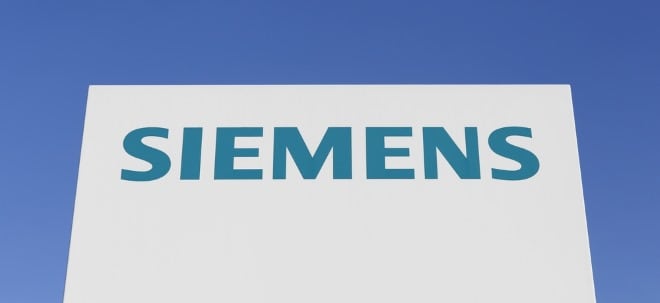Dotmatics Launches BioGlyph Luma to Accelerate the Future of Protein Design & Engineering
New protein-design & engineering solution enables the first step in Dotmatics' end-to-end scientific intelligence vision—accelerating multimodal R&D with connected, data-driven workflows
BOSTON, June 12, 2025 /PRNewswire/ -- Dotmatics®, a leader in R&D scientific software that provides end-to-end solutions to connect science, data, and decision-making, today announced the launch of BioGlyph Luma, a next-generation protein design and engineering solution purpose-built for the complexity of modern biologic R&D. As the newest addition to the Luma™ Scientific, Intelligence Platform, BioGlyph Luma addresses a longstanding gap in the Design–Make–Test–Decide research cycle for protein therapeutics by managing the "Design" phase, enabling real-time traceability and a new level of precision in biologic design. This milestone extends the Luma platform to provide deep end-to-end support for protein design, cloning, expression, purification, and characterization.
Designed for today's ever-changing, multimodal therapeutic landscape, BioGlyph Luma empowers teams to create, register, and analyze diverse protein designs—including multispecific antibodies and fusion proteins—with precision, accuracy, and flexibility. Supported capabilities include asynchronous, highly scalable registration of interrelated entities, delivering traceability and information depth across the design process. The platform integrates seamlessly with Dotmatics' widely used scientific tools such as Geneious®, GraphPad Prism®, and Protein Metrics™, facilitating data traceability and workflow automation across the biologic discovery process.
"For too long, protein design has been slowed by disconnected tools, manual workarounds, and rigid data models," said Michael Swartz, Chief Strategy Officer at Dotmatics. "BioGlyph Luma changes that – putting precision, data automation, and traceability at the forefront of biologic discovery."
Multimodal Discovery Needs a New Kind of Platform
As therapeutic science evolves, so do the challenges facing R&D teams. Luma enables researchers to model all of their processes–including both dry lab and wet lab operations–as a cohesive digital environment. Every research step is precisely tracked and can be adapted in real time, without relying on complex service-based configurations. Scientists create and update workflows on their own, building a 'digital twin' of their end-to-end workflows with greater precision than existing tools available today.
Luma maintains relationships between material inputs and outputs across steps and links raw and processed data–including simulation inputs and outputs–automatically. This creates a detailed, connected record of end-to-end scientific processes, supporting faster, data-driven decisions across therapeutic areas. These capabilities are delivered without compromising record-keeping and compliance requirements. Data with high levels of detail can also be exported to ELNs in a compatible format reducing the burden of duplicate entry and supporting downstream requirements for IP documentation and compliance.
Each therapeutic mode comes with its own set of unique complexities, from living cells and multiple protein formats to RNA, small molecules, and their combinations. The workflows required to make, validate, and purify these materials are complex, with some processes involving over 100 steps. Luma takes a different approach, delivering a platform that adapts gracefully across scientific modes and domains. Its combination of adaptive process modeling and data automation allows it to scale with the demands of multimodal science–bridging longstanding gaps that have existed in labs.
The Intelligence of Luma Powering Smarter, More Agile Science
Luma is designed for this new reality. Rather than forcing science to conform to inflexible systems, Luma enables adaptive process modeling—letting teams build, modify, and scale scientific workflows in real time as research evolves. This flexibility empowers scientists to explore multiple paths simultaneously, pivot based on emerging data, and standardize best practices across programs and teams.
At the same time, Luma introduces a new level of end-to-end data automation. Data flows freely between instruments, applications, and collaborators—removing bottlenecks and manual workarounds, and delivering context-rich insights at every stage of discovery.
"Multimodal science is redefining how therapeutic R&D works—and most platforms weren't designed for this level of complexity," said Kalim Saliba, Chief Product Officer at Dotmatics. "Luma gives scientists the ability to model and adapt their workflows in real time, reduce manual steps, and make better-informed decisions that will ultimately help them identify and advance the most promising candidates faster."
Luma connects data, tools, workflows, and decision-making across every step of the scientific process. This approach enables a fully functioning lab-in-a-loop: a continuously learning environment where data flows between wet and dry labs, instruments and applications, scientists, and stakeholders. The result is not just faster research—it's smarter, more scalable science.
"Luma isn't just a platform—it's a new architecture for scientific discovery," said Saliba. "By weaving together data, tools, and decisions into a continuous digital thread, Luma helps teams move faster and collaborate more effectively—no matter the modality."
Built with BioGlyph Protein Design Capabilities
The creation of BioGlyph Luma follows Dotmatics' investment in the protein design startup, BioGlyph, Inc. in July 2024, which was founded by protein engineers. BioGlyph's proprietary technology–particularly in MsAbs R&D–is focused on accelerating and improving the development of protein therapeutics. One of the fastest growing new research modalities today is MsAbs.
"We believe biologic design should be collaborative and intuitive—while also pushing the boundaries of what's possible," said Fernando Garces, co-founder and CEO of BioGlyph. "BioGlyph empowers every scientist, regardless of computational background, to innovate with confidence and communicate seamlessly across teams."
Today's announcement of BioGlyph Luma from Dotmatics is part of the company's effort to support its customers and the new therapies they are pursuing using a multimodal approach to life science discovery.
To learn more or request a demo, visit dotmatics.com/luma/bioglyph-luma
Forward-Looking Statements
This article contains forward-looking statements that are intended to outline our general product strategy. It is intended for informational purposes only and speaks only as of the date the statements are first published. It is not a commitment to deliver any functionality and should not be relied upon for making purchase decisions. You should not put any contractual reliance on these statements. The development, release, and timing of any products or capabilities remains at the sole discretion of Dotmatics.
No representation or warranty, express or implied, is provided in relation to the fairness, accuracy, correctness, completeness or reliability of the information, opinions or conclusions expressed herein. Only those representations or warranties that are made in or pursuant to one or more definitive agreements involving the parties will have any legal effect.
About Dotmatics
Dotmatics is a leader in R&D scientific software connecting science, data, and decision-making. Its enterprise R&D platform and scientists' favorite applications drive efficiency and accelerate innovation. More than 2 million scientists and 14,000 customers trust Dotmatics to help them create a healthier, cleaner, safer world. Dotmatics is a global team of more than 800 people dedicated to supporting its customers in over 180 countries. The company's principal office is in Boston, with 13 offices and R&D teams located around the world.
Dotmatics is backed by Insight Partners, a leading global venture capital and private equity firm investing in high-growth technology and software scaleup companies. Learn more about Dotmatics, its platform, and applications including GraphPad Prism, Geneious, SnapGene, Protein Metrics, and LabArchives at https://www.dotmatics.com.
About BioGlyph
BioGlyph, a techbio startup founded in February 2023, has launched a groundbreaking platform that introduces a universal and agnostic language for the design and registration of recombinant biologics. This proprietary technology was purpose-built to address the complexity of next-generation formats, particularly multispecific antibodies, while remaining accessible to scientists across disciplines—from antibody discovery to protein engineering, cloning, expression, purification, and molecular assessment. Designed with an intuitive user interface, BioGlyph's platform captures detailed format information and streamlines collaboration across R&D workflows. With a growing network of collaborators across the U.S. and internationally, BioGlyph is redefining how biologics are designed and developed for real-world therapeutic applications. BioGlyph is backed by Dotmatics. Learn more about BioGlyph at https://bioglyph.app/
![]() View original content to download multimedia:https://www.prnewswire.com/news-releases/dotmatics-launches-bioglyph-luma-to-accelerate-the-future-of-protein-design--engineering-302479533.html
View original content to download multimedia:https://www.prnewswire.com/news-releases/dotmatics-launches-bioglyph-luma-to-accelerate-the-future-of-protein-design--engineering-302479533.html
SOURCE Dotmatics Inc


